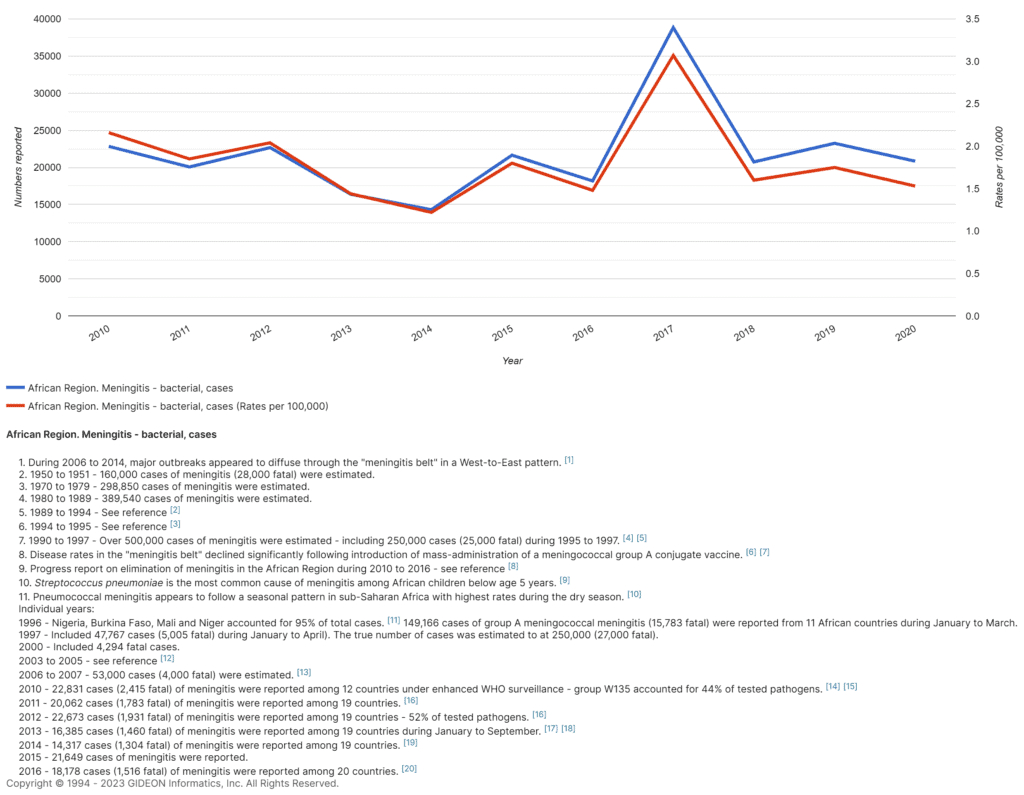Early mentions of meningitis date back to the 17th and 18th centuries. Several writers mentioned brain fever, referring to people with headaches, fevers, and delirium – some common symptoms of meningitis. In 1803, François Herpin, a French military surgeon, was the first to write a dissertation on the illness, referring to it as an inflammation of the brain’s membranes [10].
In 1805, Gaspard Vieusseux, a physician based in Geneva, Switzerland, developed the first and most comprehensive clinical description of the illness. Vieusseux described the disease further during the epidemics that occurred in the subsequent years in New England, Canada, Virginia, Kentucky, Ohio, and Pennsylvania states in the USA between 1806 to 1809 [11].
In 1887, Anton Weichselbaum, an Austrian pathologist and bacteriologist, identified the causative agent of the illness in New England. The first epidemics of meningitis occurred in Sub-Saharan Africa [12]. It continued to spread to countries in Europe, the Americas, and Asia throughout the 19th century, with case fatality ranging from 69% to 100%.
In 1905, Simon Flexner, an American scientist from the New York Rockefeller Institute for Medical Research, New York, USA, conducted experiments by immunizing horses to validate the effectiveness of the anti-meningococcal serum intended for treating humans. The serum was therapeutically effective, and clinicians began recommending it as a preventive medicine for people in close contact with patients with meningococcal disease.
In 1937, Francis Schwentker and colleagues used sulfonamides to treat patients with meningococcal disease. The results were positive, with all ten patients surviving the illness. Extensive studies were done on the effectiveness of sulfonamides in treating meningitis in the subsequent years.
A few years later, in 1944, David Rosenberg and Phillip Arling used penicillin to treat patients with meningitis, and the outcome was positive. In 1968, the emergence of an epidemic caused by a sulfonamide-resistant strain, N. meningitidis, in Brazil made clinicians switch from sulfonamides to penicillin. Penicillin became a drug of choice for many years [11].
But, the breakthrough came with the development of the first Haemophilus influenza type B conjugate vaccine (HiBCV) in 1985. In 1999, the first meningococcal conjugate vaccine was approved for public use in the UK.
In 2000, the heptavalent pneumococcal conjugate vaccine (PCV7) was licensed [13]. It was developed to protect against the seven most invasive and prevalent disease serotypes in Europe and the US [14]. In 2005, a meningococcal conjugate vaccine covering serogroups A, C, W, and Y was licensed in the US [15].
